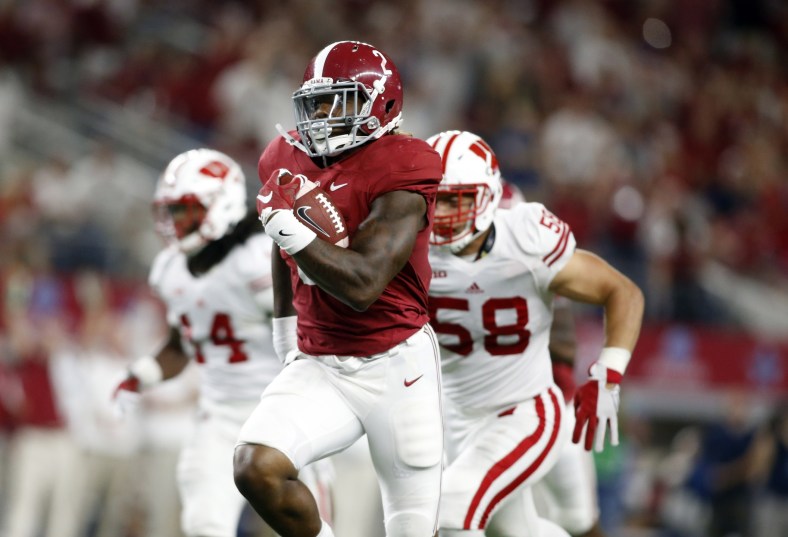
There are two kinds of players coming out of the 2016 NFL Draft this year. There are athletes with football potential, and there are football players with limited athletic potential.
Here is a quick guide for the Speed, Agility, Explosion, INDEX, HP and Torque in Ft-Lb categories listed at the bottom part of the graphic:
- Speed: Weight multiplied by a constant divided by the product of the 40 time, 10 split, shuttle and three-cone times. Gives an idea of raw speed by weight.
- Agility: Weight multiplied by a constant divided by the product of the 10 split, shuttle and three-cone times. Gives an idea of short area quickness by weight.
- Explosion: Weight multiplied by vertical divided by a constant multiplied by the 10-yard split to give an idea of leg explosion. Directly converts to Horsepower.
- INDEX: Weighted average of the speed, agility and explosion scores used to Index players on my archive. Gives a quick idea of overall athleticism in one number.
- HP: Explosion divided by 264 gives the estimated Horsepower generated by a singular player. Horsepower is 550 foot-pounds per second.
- Torque in FT-LB: Weight multiplied by the vertical and converted into foot-pounds. Gives an estimated torque each player would produce with their legs.
Note: Only players with full data sets are being used. For the sake of transparency, and for those who may be curious about where other players ranked, here is a link to all my work in this arena.
Offense
Quarterback: Paxton Lynch, Memphis
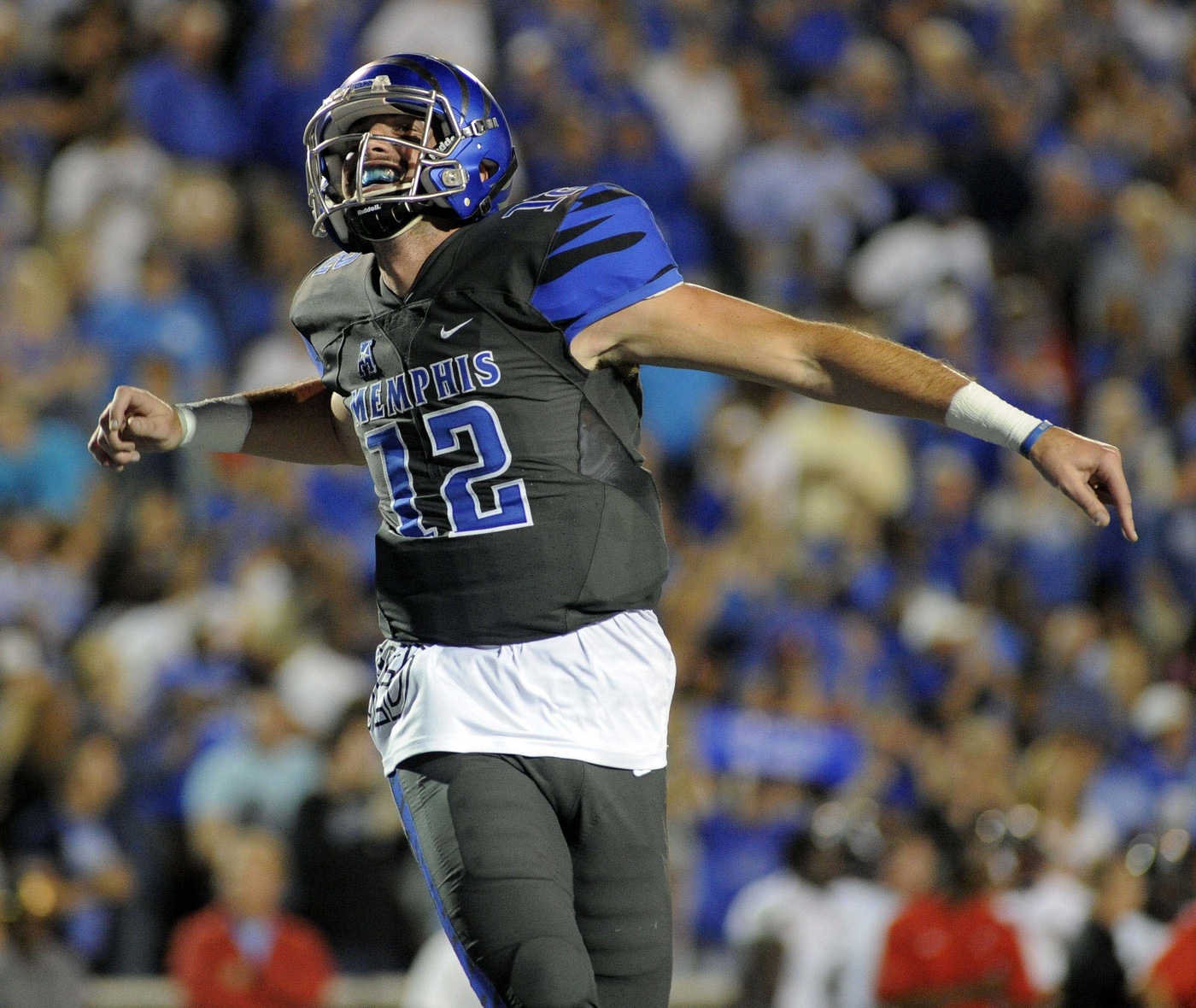
Athletic Comparison: E.J. Manuel, Buffalo Bills QB
2016 NFL Draft All-Athlete Team Quarterback pic.twitter.com/S5fw3Si2EA
— 𝑺𝒄𝒐𝒕𝒕 𝑪𝒂𝒓𝒂𝒔𝒊𝒌 🐦⬛🏈🇬🇪🇺🇦🇱🇻 (@CarasikS) April 22, 2016
Memphis’ quarterback may not be the best in this draft, but he has arguably the strongest arm out there. Also, as you can see above, he has a very good athletic profile for the position. His comparison of E.J. Manuel isn’t ideal as Manuel has better long speed, but both players are more athletic than the norm for the position.
Running Back: Derrick Henry, Alabama
Athletic Comparison: T.J. Yeldon, Jacksonville Jaguars RB
2016 NFL Draft All-Athlete Team Featured Running Back pic.twitter.com/wyre9IgV8G
— 𝑺𝒄𝒐𝒕𝒕 𝑪𝒂𝒓𝒂𝒔𝒊𝒌 🐦⬛🏈🇬🇪🇺🇦🇱🇻 (@CarasikS) April 22, 2016
Out of all running backs in this year’s draft, Derrick Henry is easily the most athletic for his size. Very few 6-foot-3, 247 pound guys move with Henry’s speed, strength and quickness. At running back, there aren’t any great athletic comparisons at his same weight, so dropping down to the cruiserweight class, we found T.J. Yeldon with similar athletic numbers but at about 20 pounds lighter.
Change of Pace Back: Darius Jackson, Eastern Michigan
Athletic Comparison: LaDanian Tomlinson, San Diego Chargers RB
2016 NFL Draft All-Athlete Team Change of Pace Back pic.twitter.com/tKJmmLmguH
— 𝑺𝒄𝒐𝒕𝒕 𝑪𝒂𝒓𝒂𝒔𝒊𝒌 🐦⬛🏈🇬🇪🇺🇦🇱🇻 (@CarasikS) April 22, 2016
While Ezekiel Elliott would be the main back that most would expect here, the one who surprisingly beat him is Darius Jackson out of Eastern Michigan. Jackson has great pure speed and leg strength. Despite having athleticism comparable to future Hall of Fame running back LaDanian Tomlinson, he doesn’t have the film to backup even a draftable grade.
Fullback: Dan Vitale, Northwestern
Athletic Comparison: Peyton Hillis, Denver Broncos, Cleveland Browns, Kansas City Chiefs, Tampa Bay Buccaneers and New York Giants RB/FB
2016 NFL Draft All-Athlete Team Fullback pic.twitter.com/JvIMb42lVW
— 𝑺𝒄𝒐𝒕𝒕 𝑪𝒂𝒓𝒂𝒔𝒊𝒌 🐦⬛🏈🇬🇪🇺🇦🇱🇻 (@CarasikS) April 22, 2016
Dan Vitale is almost ideal in terms of what any team would want in a fullback. He’s a solid blocker, and he has pop behind his pads when he’s leading the way. However, he’s also a very good athlete and compares with one of the more athletic fullbacks of all-time: Peyton Hillis.
Primary Wide Receiver: Moritz Boehringer, Schwabisch Hall Unicorns (Germany)
Athletic Comparison: Matt Jones, Jacksonville Jaguars WR
2016 NFL Draft All-Athlete Team Wide Receiver 1 pic.twitter.com/5mPjG1gd7v
— 𝑺𝒄𝒐𝒕𝒕 𝑪𝒂𝒓𝒂𝒔𝒊𝒌 🐦⬛🏈🇬🇪🇺🇦🇱🇻 (@CarasikS) April 22, 2016
Easily the most athletic wide receiver in this year’s draft is German wide receiver Moritz Boehringer. He played a similar role in Germany as to what guys like Marques Colston have played in the NFL. However, his only real comparison is another guy who never played wide receiver before going pro against guys who were above a high school level talent-wise either: Matt Jones.
Possession Wide Receiver: Marquez North, Tennessee
Athletic Comparison: Niles Paul, Washington WR/TE
2016 NFL Draft All-Athlete Team Possession Wide Receiver pic.twitter.com/R87VgMWmOJ
— 𝑺𝒄𝒐𝒕𝒕 𝑪𝒂𝒓𝒂𝒔𝒊𝒌 🐦⬛🏈🇬🇪🇺🇦🇱🇻 (@CarasikS) April 22, 2016
Injuries have plagued Marquez North’s career at Tennessee, but when it comes to his physical talent, it has always been there. Before the injuries, it wouldn’t have been surprising if he had timed in the same kind of ranges that Julio Jones and Donte Moncrief are in. However, he still times well and compares best to Niles Paul — a productive H-back and slot receiver for Washington.
Slot Wide Receiver: Braxton Miller, Ohio State
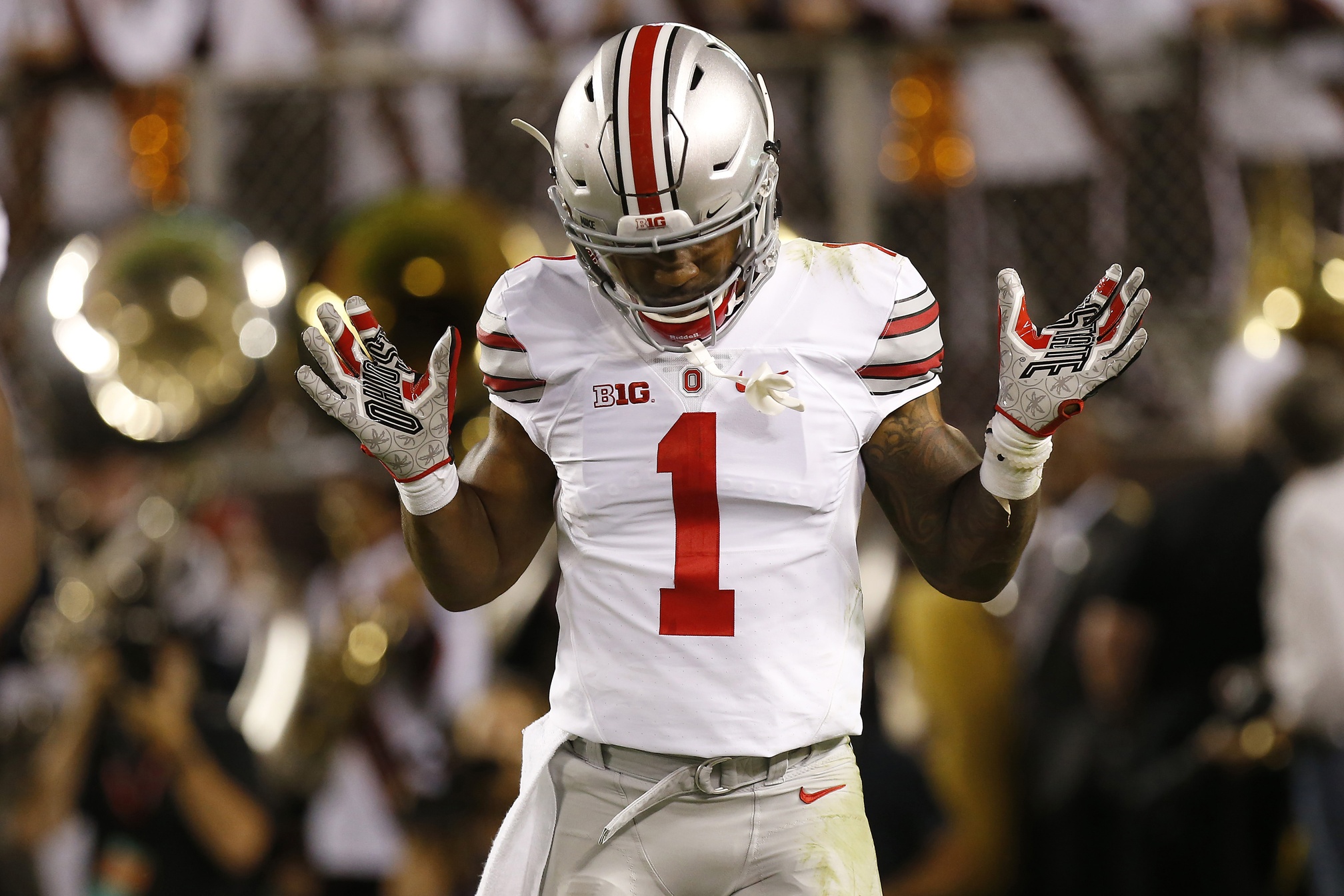
Athletic Comparison: Amari Cooper, Oakland Raiders WR
2016 NFL Draft All-Athlete Team Slot Receiver pic.twitter.com/WfrqkLtzvh
— 𝑺𝒄𝒐𝒕𝒕 𝑪𝒂𝒓𝒂𝒔𝒊𝒌 🐦⬛🏈🇬🇪🇺🇦🇱🇻 (@CarasikS) April 22, 2016
When looking at athletic comparisons for Braxton Miller, Amari Cooper popping up was shocking to me. Miller and Cooper are definitely comparable as athletes though. The question is how long it will be as to when Braxton finally turns into a solid NFL wide receiver. Miller has a higher ceiling than given credit for based on this information, though.
Tight End: Devon Cajuste, Stanford
Athletic Comparison: Dennis Pitta, Baltimore Ravens TE
2016 NFL Draft All-Athlete Team Tight End pic.twitter.com/fl7IF1iuwt
— 𝑺𝒄𝒐𝒕𝒕 𝑪𝒂𝒓𝒂𝒔𝒊𝒌 🐦⬛🏈🇬🇪🇺🇦🇱🇻 (@CarasikS) April 22, 2016
At tight end, taking someone who can play more of an H-back role makes a bit more sense. You can teach guys who are willing to block and are a bit heavy framed like Devon Cajuste how to play tight end (see: Jacob Tamme). Cajuste is the most athletic tight end in a weak draft for the position. His comparison to Dennis Pitta isn’t a horrible for his career, as long as he stays healthy.
Left Tackle: Jason Spriggs, Indiana
Athletic Comparison: Ryan Schraeder, Atlanta Falcons RT
2016 NFL Draft All-Athlete Team Left Tackle pic.twitter.com/Q2k3U6QHIs
— 𝑺𝒄𝒐𝒕𝒕 𝑪𝒂𝒓𝒂𝒔𝒊𝒌 🐦⬛🏈🇬🇪🇺🇦🇱🇻 (@CarasikS) April 22, 2016
The most athletic left tackle in this year’s draft is easily Jason Spriggs. He’s quick laterally and has great footwork. He also has solid length with his nearly 6-foot-6 frame and 34-1/8″ arms. When building a prototype left tackle, he’s right there. Athletically, he compares most favorably to Ryan Schraeder of the Atlanta Falcons—who has left tackle athleticism but plays right tackle in Atlanta.
Left Guard: Connor McGovern, Missouri
Athletic Comparison: Allen Barbre, Green Bay Packers, Miami Dolphins, Seattle Seahawks and Philadelphia Eagles OG
2016 NFL Draft All-Athlete Team Left Guard pic.twitter.com/6CtWe4VMF5
— 𝑺𝒄𝒐𝒕𝒕 𝑪𝒂𝒓𝒂𝒔𝒊𝒌 🐦⬛🏈🇬🇪🇺🇦🇱🇻 (@CarasikS) April 22, 2016
Some guards have great athleticism and can play in either a power-blocking scheme or a zone-blocking scheme. Connor McGovern has the nastiness and quickness to do both. His comparison with Allen Barbre on the surface seems like it’s knocking him at first, but Barbre honestly is a very athletic player for guard.
Center: Jake Brendel, UCLA
Athletic Comparison: Chris Myers, Denver Broncos and Houston Texans C
2016 NFL Draft All-Athlete Team Center pic.twitter.com/CagMKKSqpr
— 𝑺𝒄𝒐𝒕𝒕 𝑪𝒂𝒓𝒂𝒔𝒊𝒌 🐦⬛🏈🇬🇪🇺🇦🇱🇻 (@CarasikS) April 22, 2016
At center, athleticism is more important in a zone scheme than in a man scheme due to the close quarters. However, Jake Brendel has shown proficiency in both schemes. Brendel, much like Chris Myers, has more length than the average center. But at the same time he’s equally as quick and has similar functional strength.
Right Guard: Joe Thuney, North Carolina State
Athletic Comparison: Justin Pugh, New York Giants OT/OG
2016 NFL Draft All-Athlete Team Right Guard pic.twitter.com/sSRQxbsbXY
— 𝑺𝒄𝒐𝒕𝒕 𝑪𝒂𝒓𝒂𝒔𝒊𝒌 🐦⬛🏈🇬🇪🇺🇦🇱🇻 (@CarasikS) April 22, 2016
Joe Thuney is the most athletic guard in this year’s class, but his best fit in the NFL might be at right guard. He played left tackle, left guard, right guard and right tackle for the Wolfpack and showed the athleticism to play even left tackle at the college level. However, just like his athletic comparison Justin Pugh, he’s a much better fit for guard due to a lack of tackle length.
Right Tackle: Brandon Shell, South Carolina
Athletic Comparison: Demetress Bell, Philadelphia Eagles and Buffalo Bills LT
2016 NFL Draft All-Athlete Team Right Tackle pic.twitter.com/L9K6nixuKW
— 𝑺𝒄𝒐𝒕𝒕 𝑪𝒂𝒓𝒂𝒔𝒊𝒌 🐦⬛🏈🇬🇪🇺🇦🇱🇻 (@CarasikS) April 22, 2016
At right tackle, power is definitely needed, but quickness to handle sight-side pass rushers is also of the utmost importance. Brandon Shell has a nice mix of both. Athletically, he’s similar to Demetress Bell, a former left tackle for the Eagles and Bills. However, unlike Bell, he’s got better upper body and functional strength.
Defense
Nose Tackle: Javon Hargrave, South Carolina State
Athletic Comparison: Roy Miller, Tampa Bay Buccaneers and Jacksonville Jaguars DT
2016 NFL Draft All-Athlete Team Nose Tackle pic.twitter.com/aCPrYL89Nh
— 𝑺𝒄𝒐𝒕𝒕 𝑪𝒂𝒓𝒂𝒔𝒊𝒌 🐦⬛🏈🇬🇪🇺🇦🇱🇻 (@CarasikS) April 22, 2016
Nose tackles tend to be bigger than guys like Javon Hargave and his 309 pound frame. Hargrave has quickness, strength and the coveted ability to eat double teams on the inside of the line. His comparison to Roy Miller stops there, though. Miller is more technically sound, and he has shown an ability to help elevate defenses despite being an average talent.
3-4 Defensive End: Bronson Kaufusi, Brigham Young
Athletic Comparison: Cameron Jordan, New Orleans Saints DE
2016 NFL Draft All-Athlete Team 3-4 Defensive End pic.twitter.com/BriAhpN3Na
— 𝑺𝒄𝒐𝒕𝒕 𝑪𝒂𝒓𝒂𝒔𝒊𝒌 🐦⬛🏈🇬🇪🇺🇦🇱🇻 (@CarasikS) April 22, 2016
The kind of quickness from someone who is 6-foot-6 and 285 pounds that Bronson Kaufusi has is rare. So rare that the closest player to him historically is a Pro Bowl-level talent like Cameron Jordan. Kaufusi is much more raw coming out than Jordan was, but as a base end in a 3-4 defense he should be able to eat doubles in base and collapse the pocket inside.
3-technique Tackle: Connor Wujciak, Boston College
Athletic Comparison: Jeremiah “Jay” Ratliff, Dallas Cowboys and Chicago Bears DT
2016 NFL Draft All-Athlete Team 3-Technique Defensive Tackle pic.twitter.com/6R5e53QYGd
— 𝑺𝒄𝒐𝒕𝒕 𝑪𝒂𝒓𝒂𝒔𝒊𝒌 🐦⬛🏈🇬🇪🇺🇦🇱🇻 (@CarasikS) April 22, 2016
Connor Wujciak is a late-round talent because he doesn’t have a great fit in every scheme. He has two techniques that he can do well, and they are both ones that he attacks and controls a gap. Like Jay Ratliff, he’s going to be a late-round pick. But if he can put it all together, he has the explosion off the line to be an impact player for whoever takes him.
4-3 Base Defensive End: Emmanuel Ogbah, Oklahoma State
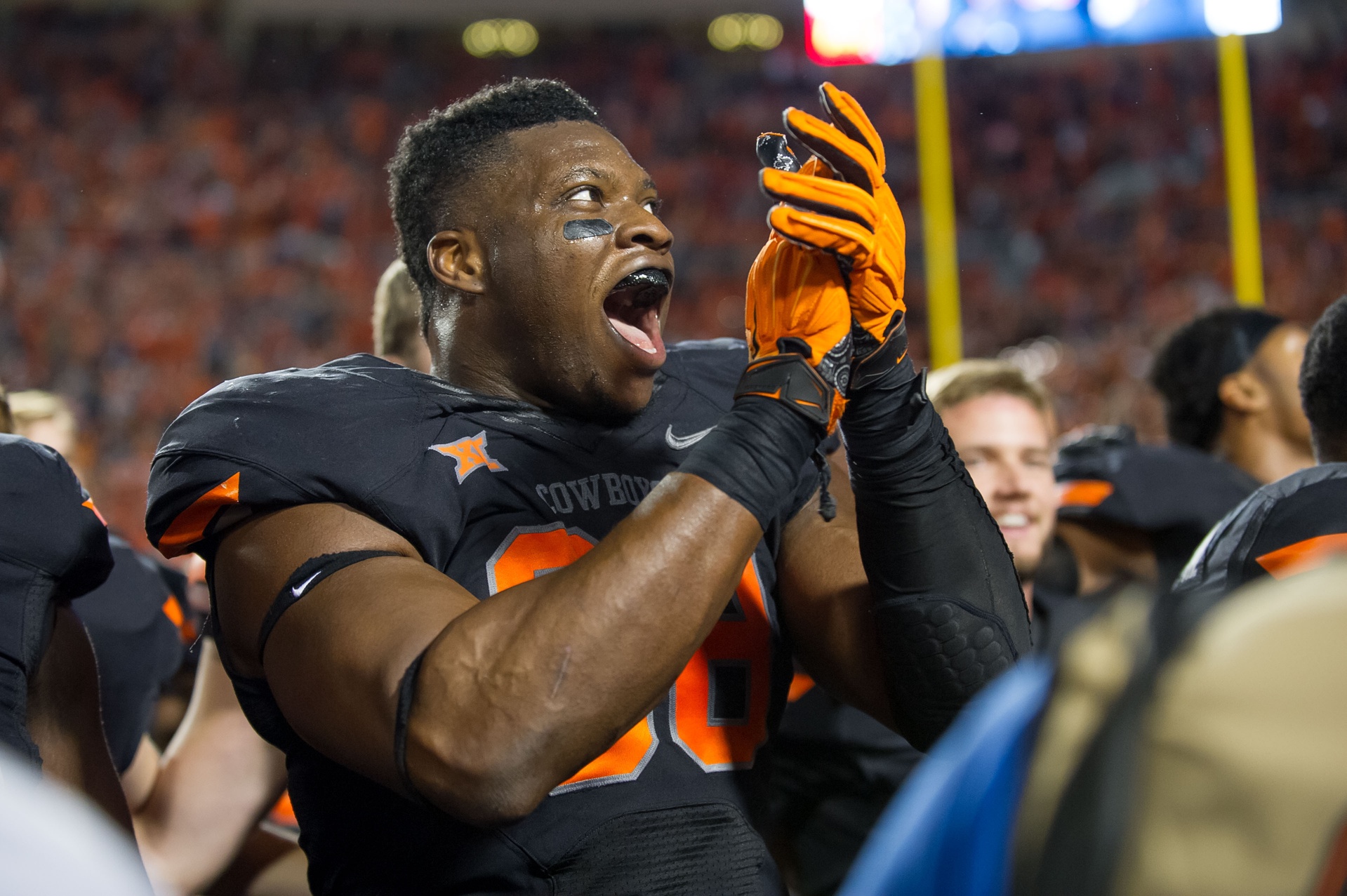
Athletic Comparison: Carlos Dunlap, Cincinnati Bengals DE
2016 NFL Draft All-Athlete Team 4-3 Base Defensive End pic.twitter.com/dWPwuNnMQ2
— 𝑺𝒄𝒐𝒕𝒕 𝑪𝒂𝒓𝒂𝒔𝒊𝒌 🐦⬛🏈🇬🇪🇺🇦🇱🇻 (@CarasikS) April 22, 2016
When looking for a 4-3 base defensive end, length, strength and quickness are imperative traits. Emmanuel Ogbah fits the prototypical athlete for the role and compares very favorably to Pro Bowl defensive end Carlos Dunlap. Ogbah doesn’t have the same kind of talent that Dunlap has shown in the league, but if his potential blooms anywhere close to Dunlap’s, he’ll be worth a second-rounder.
“LEO” Pass Rusher: Leonard Floyd, Georgia
Athletic Comparison: Mathias Kiwanuka, New York Giants DE/OLB
2016 NFL Draft All-Athlete Team LEO Leonard Floyd pic.twitter.com/wwRvx7hN0a
— 𝑺𝒄𝒐𝒕𝒕 𝑪𝒂𝒓𝒂𝒔𝒊𝒌 🐦⬛🏈🇬🇪🇺🇦🇱🇻 (@CarasikS) April 22, 2016
At LEO, athletic talent is imperative. Speed off of the edge is important, and with guys like Leonard Floyd, you have that in spades. Initially, Dion Jordan looked like a good comparison, but Mathias Kiwanuka is actually better because of how similar they are on the field. Floyd’s length and athleticism will be what helps him the most to make an impact early.
3-4 Outside Linebacker: Tyrone Holmes, Montana
Athletic Comparison: Brooks Reed, Houston Texans and Atlanta Falcons OLB
2016 NFL Draft All-Athlete Team 3-4 Outside Linebacker pic.twitter.com/Ds6wBbcBbX
— 𝑺𝒄𝒐𝒕𝒕 𝑪𝒂𝒓𝒂𝒔𝒊𝒌 🐦⬛🏈🇬🇪🇺🇦🇱🇻 (@CarasikS) April 22, 2016
At 3-4 outside linebacker, speed coming off the edge is important, but density is just as important. Having athletes that might be a little bit shorter with less length but more leverage and speed is ideal for the position. Tyrone Holmes is underrated coming out of Montana, but his athleticism is comparable to Atlanta’s Brooks Reed, who had a good career as a 3-4 OLB in Houston.
Middle Linebacker: Nick Vigil, Utah State
Athletic Comparison: David Thornton, Indianapolis Colts and Tennessee Titans MLB
2016 NFL Draft All-Athlete Team Middle Linebacker pic.twitter.com/NDokRK3hq3
— 𝑺𝒄𝒐𝒕𝒕 𝑪𝒂𝒓𝒂𝒔𝒊𝒌 🐦⬛🏈🇬🇪🇺🇦🇱🇻 (@CarasikS) April 22, 2016
At linebacker in today’s NFL, elite coverage ability and athleticism has become the norm. Nick Vigil at middle linebacker can attack the seams, has good range and shows enough physicality in the run game. He compares very favorably as an athlete to David Thornton, a former starting inside linebacker for the Colts and Titans.
4-3 Outside Linebacker: Darron Lee, Ohio State
Athletic Comparison: Bobby Wagner, Seattle Seahawks MLB
2016 NFL Draft All-Athlete Team 4-3 Outside Linebacker pic.twitter.com/L0kTgIKLPm
— 𝑺𝒄𝒐𝒕𝒕 𝑪𝒂𝒓𝒂𝒔𝒊𝒌 🐦⬛🏈🇬🇪🇺🇦🇱🇻 (@CarasikS) April 22, 2016
Darron Lee is one of the most athletic linebackers out there this year. His straight-line speed and athletic profile compares more to a safety that’s got a big more weight on him. Bobby Wagner is his best comparison as true athletes. Lee isn’t nearly as physical as Wagner, but he’s a great athlete and profiles best as a weak-side linebacker in the 4-3.
No. 1 Cornerback: Vernon Hargreaves, Florida
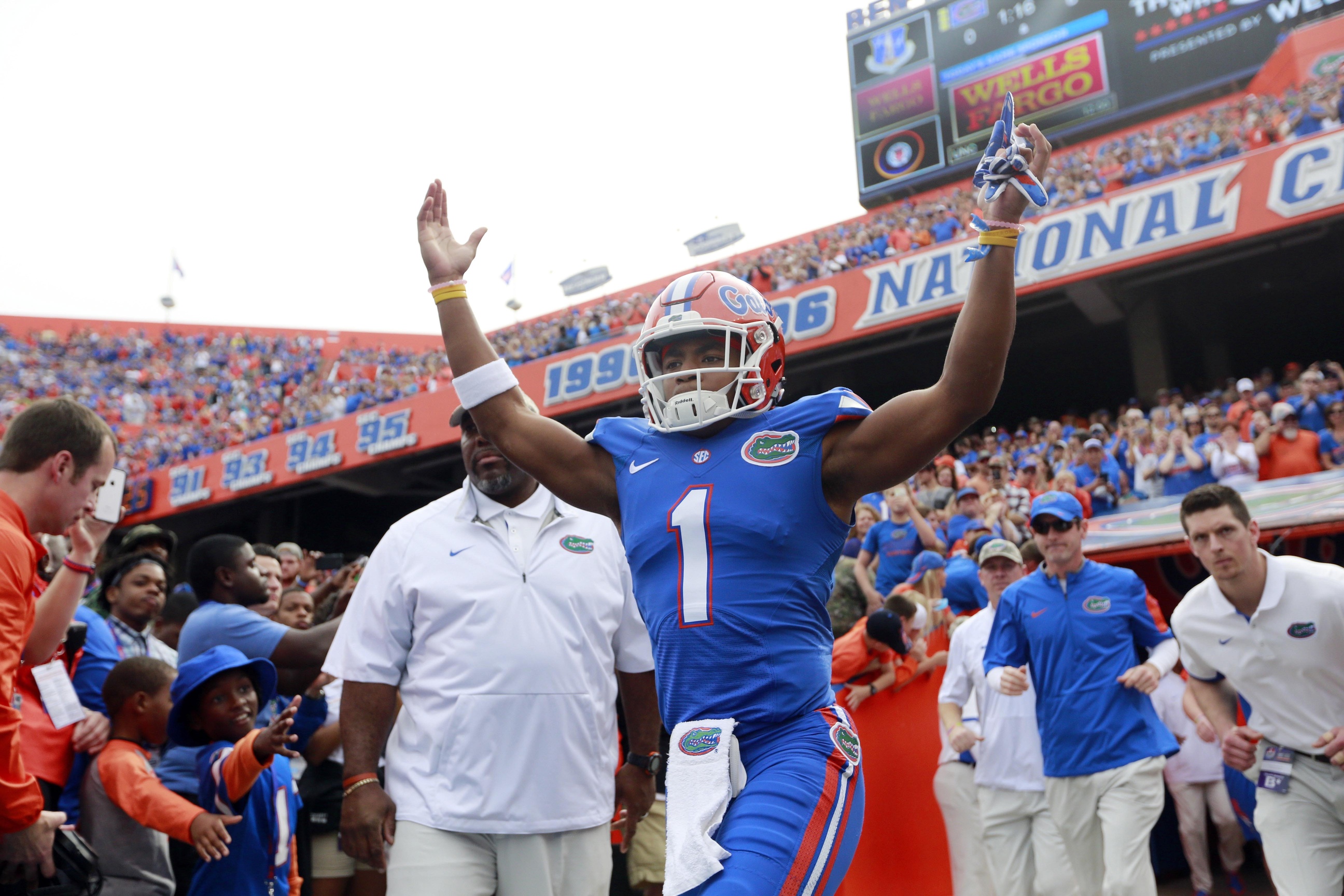
Athletic Comparison: Terence Newman, Dallas Cowboys, Cincinnati Bengals and Minnesota Vikings CB
2016 NFL Draft All-Athlete Team No. 1 Cornerback pic.twitter.com/uQ3LaAeIR0
— 𝑺𝒄𝒐𝒕𝒕 𝑪𝒂𝒓𝒂𝒔𝒊𝒌 🐦⬛🏈🇬🇪🇺🇦🇱🇻 (@CarasikS) April 22, 2016
Raw athleticism at cornerback is very crucial. Vernon Hargreaves isn’t the insane athlete that Desmond Trufant was in 2013 or Darrelle Reveis was in 2007, but he’s still an above-average athlete for the position with great instincts and the best athlete for the role in the draft. Terrence Newman was a similar player coming out of college, but had way better long speed.
No. 2 Cornerback: Xavien Howard, Baylor
Athletic Comparison: Chris McAlister, Baltimore Ravens and New Orleans Saints CB
2016 NFL Draft All-Athlete Team No. 2 Cornerback pic.twitter.com/p3JX7quJbH
— 𝑺𝒄𝒐𝒕𝒕 𝑪𝒂𝒓𝒂𝒔𝒊𝒌 🐦⬛🏈🇬🇪🇺🇦🇱🇻 (@CarasikS) April 22, 2016
This year’s cornerback class isn’t as athletic as some years in the past. Xavien Howard, it’s second-most athletic player, has a great athletic profile that compares to a fringe Hall of Fame talent in Chris McAlister. The former Ravens corner and the Baylor player have nearly identical numbers outside of the straight-forward and top-end speed.
Nickel Defender: Jalen Ramsey, Florida State
Athletic Comparison: Eric Berry, Kansas City Chiefs FS
2016 NFL Draft All-Athlete Team Nickel Defender pic.twitter.com/VHuraWjw0C
— 𝑺𝒄𝒐𝒕𝒕 𝑪𝒂𝒓𝒂𝒔𝒊𝒌 🐦⬛🏈🇬🇪🇺🇦🇱🇻 (@CarasikS) April 22, 2016
While he would easily be the best athlete at either cornerback or safety, Jalen Ramsey is a guy who needs to move around to multiple spots. As a nickel defender, he can bring versatility to a defense, and his Eric Berry-level of speed, strength and size will give offensive coordinators fits as they try to game-plan for him.
Free Safety: Kevin Byard, Middle Tennessee State
Athletic Comparison: Devin McCourty, New England Patriots CB/FS
2016 NFL Draft All-Athlete Team Free Safety pic.twitter.com/WtNgvuNjBk
— 𝑺𝒄𝒐𝒕𝒕 𝑪𝒂𝒓𝒂𝒔𝒊𝒌 🐦⬛🏈🇬🇪🇺🇦🇱🇻 (@CarasikS) April 22, 2016
Kevin Byard has great athleticism to play the deep third of the field. His top-end speed and agility are shown off pretty easily both on the field and in his athletic testing. Similar to Devin McCourty, Byard can make players around him better by taking away the deep ball and allowing the underneath coverage to play more aggressively.
Strong Safety: Justin Simmons, Boston College
Athletic Comparison: Michael Griffin, Tennessee Titans and Minnesota Vikings SS
2016 NFL Draft All-Athlete Team Strong Safety pic.twitter.com/5b5sAA9843
— 𝑺𝒄𝒐𝒕𝒕 𝑪𝒂𝒓𝒂𝒔𝒊𝒌 🐦⬛🏈🇬🇪🇺🇦🇱🇻 (@CarasikS) April 22, 2016
The best athlete that fits at strong safety in this draft isn’t an ideal size for all schemes. But similar to Michael Griffin, Justin Simmons has an athletic profile normally suited for a cornerback. Both players are right around 200 pounds and have good straight-line speed. But their short area quickness is where they really show their athletic talents.